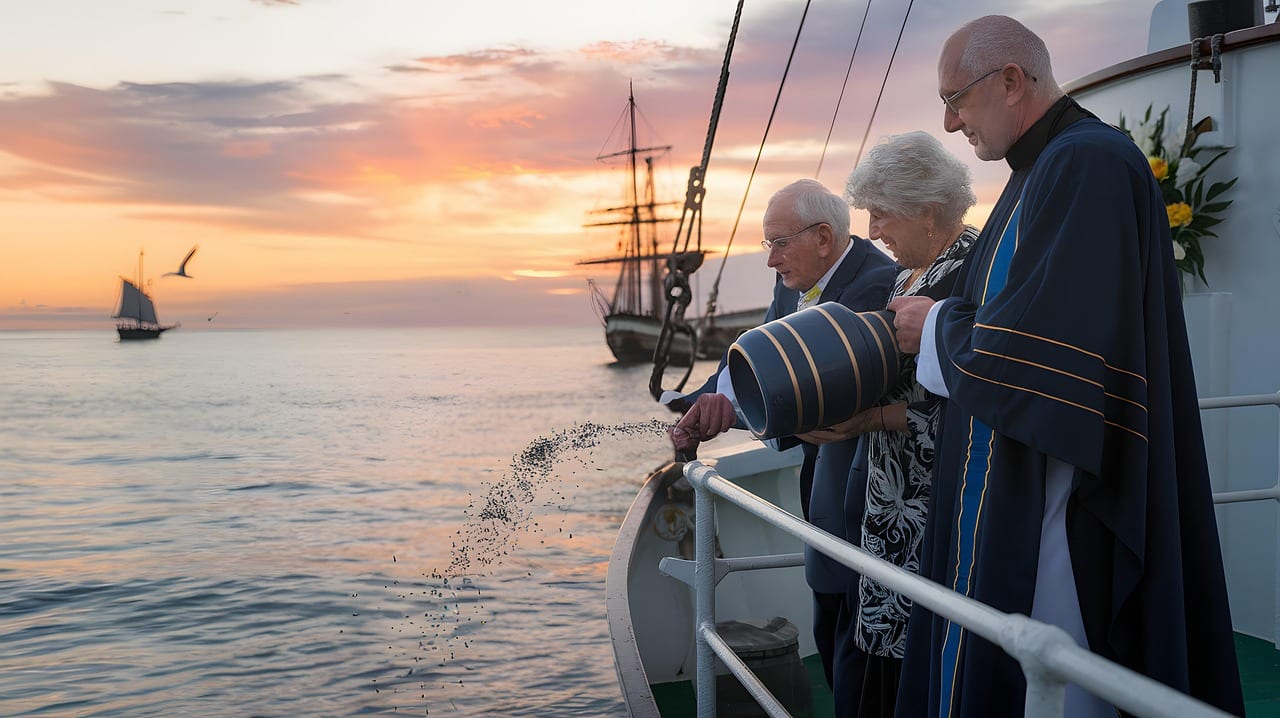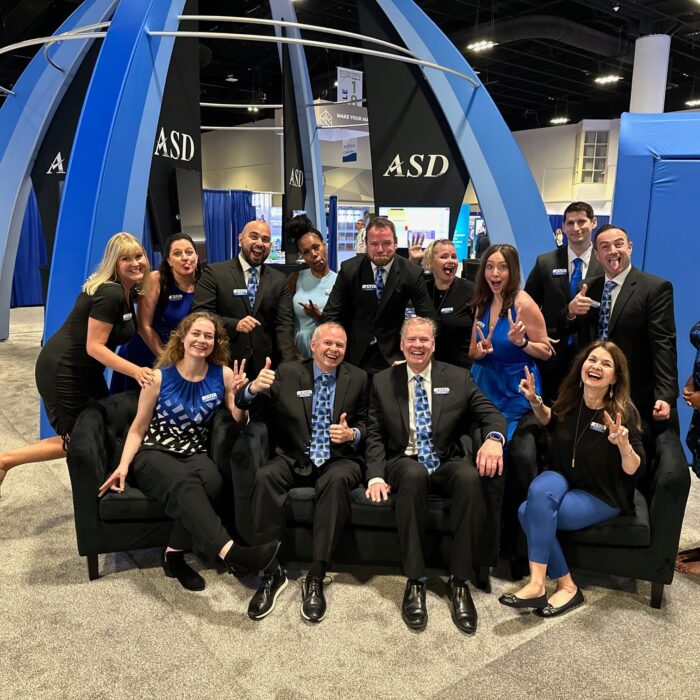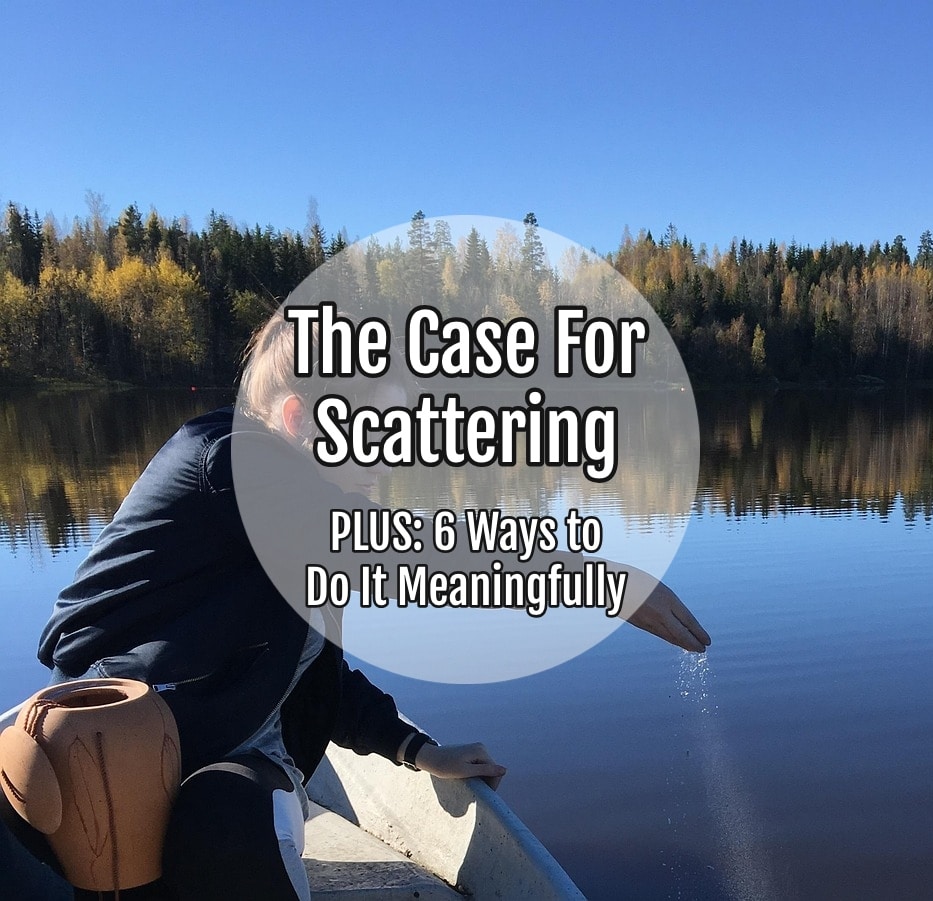
I remember the first time I learned of the concept of being cremated and having your ashes spread somewhere after your death. It wasn’t from life experience or school I learned it, but from my mom forcing me to watch the movie The Bridges of Madison County as a teenager. For those who haven’t seen it, I won’t spoil the story but the main plot revolves around the protagonist’s children grappling with the fact that their mother’s last wish was to have her ashes spread over a covered bridge with the ashes of another man who was not their father. Let’s just say, it left a lasting impact on me and I think that may be at least part of the reason why I’ve always romanticized the act of scattering ashes.
When my father died and my family had to decide how to honor his memory, we chose to scatter him in a patch of secluded forest both because he loved nature and my mother’s memory of his disdain for cemeteries. It took our family a long time to choose the right place and time, but we never questioned that scattering is what he would have wanted, even though he died young and never shared exactly what his wishes were. There was just something about this way of saying goodbye that felt deeply personal and true to who he was.

I remember when I first joined ASD’s sales team in the early 2010s and began attending funeral conventions, I had the opportunity to hear a speaker at a convention talk about the value of permanent memorialization. The idea he stressed throughout his speech was that funeral directors must convey to families who choose cremation the importance of honoring their loved one’s memory with some type of enduring monument. There seemed to also be a suggestion that NOT doing this was somehow disrespectful to the deceased person and that funeral directors should make every attempt to convince families not to scatter. To be frank, I wholeheartedly reject this point of view. Mainly, I don’t agree that permanent memorialization is the only correct path for families to take when not everyone views the world the same.
I know that many funeral directors also believe fervently in the value of permanent memorialization, and I do think their viewpoint is rooted in genuine conviction. I also do think it is a beautiful and important thing to honor someone and ensure that their memory lives on. However, when it comes to installing a permanent structure, meant to occupy space on earth forever or at least for many, many years, there are some who simply have no wish take up real estate after they die. For these types of people, the concept of permanent memorialization contradicts their very nature and therefore cannot be the proper way to honor their memory.
When I think about this subject, my mind often brings me back to reading the nineteenth century poem, Thanatopsis by William Cullen Bryant, who was death positive before it was cool to be death positive. These lines always stick out to me as they offer such a comforting view of death that has always resonated with me.
Earth, that nourished thee, shall claim
Thy growth, to be resolved to earth again,
And, lost each human trace, surrendering up
Thine individual being, shalt thou go
To mix for ever with the elements,
To be a brother to the insensible rock
Ashes to ashes, dust to dust. This is really the simplest way to explain the appeal of wanting your cremated remains scattered in a meaningful place after your death. The fact that the action does not involve a permanent memorial is sort of the whole point. It symbolizes the cyclical nature of life and returning back to your original form. It’s a celebration of the fact that nothing in life is truly permanent, including death. It’s all just a constant cycle. Again, this philosophy is very personal, and not one that everyone shares, but I felt moved to write about it in defense of families like mine that choose to scatter.

My hope is shed light on why funeral directors should not dismiss families that express a wish to scatter their loved one’s ashes or try to convince them that a permanent memorial is a better option. Rather than trying to persuade them to change their mind, consider how you can help them plan a meaningful and powerful scattering ceremony that gives them a cathartic experience. Many families, including my own, hold onto cremated remains for years, struggling to find the right time and place for a scattering service.
It should also be noted that families can chose to scatter a portion of their loved one’s ashes while having another portion buried or placed in a columbarium with a permanent marker. They don’t have to choose just one way to memorialize their loved one. This is an option a lot more families are selecting, with some even choosing to spread ashes in multiple places or separate them amongst multiple family members.
Funeral directors can be invaluable resources by providing families with helpful information about their options at the time of death, so they don’t have to navigate the process alone. Even something as simple as introducing them to a scattering urn—an item I didn’t even know existed until I attended a convention—can make a significant difference. I remember thinking, “I wish my family had been offered something like this.” By being proactive in guiding families through the scattering process, funeral professionals can ensure they feel supported rather than left to figure it out on their own.

Families often need guidance to help them understand the options that exist and the legal limitations of scattering cremated remains. This is where your expertise as a funeral director can really shine because many families don’t even know what is possible. By becoming knowledgeable about companies you can refer or the laws in your state regarding scattering ashes, you can provide them with the recommendations they need to plan a truly special ceremony.
There is no shortage of guides you can find online that explain where you can and cannot spread cremated remains. However, with so much information out there, you can help families but creating your own guide on your website that explain the laws specific to your state. Your funeral home is the first place families must contact after their loved one’s passing and having that information readily available to them on your website can be so helpful. Here is a great examples from Logan-Videon Funeral Home in Broomall, PA and another from Westchester Funeral Home in Eastchester, NY. Both sites explain the legalities of spreading ashes and what permissions might need to be obtained. They also offer some great suggestions for different types of ceremonies and some important considerations.
Releasing with Love: 6 Ideas For Scattering Ashes in a Meaningful Way
1. Scattering On Land
There are so many beautiful and deeply symbolic places families can choose to scatter their loved one’s cremated remains over land. I will never forget the moment I spread my father’s ashes over a sunlit patch of wild ferns growing on a forest floor and how much peace that moment brought to me. There is something profoundly moving about choosing this option as it begs the mind to see the person’s essence returning to the elements to be forever commingled with the earth.
There are a lot considerations to make. For instance, a scattering urn is a really helpful thing to recommend to families that mention their interest in this option. Unlike other urns, it is designed specifically for the act of spreading ashes. There are also companies like Teraloom and The Living Urn that can help facilitate scattering ceremonies over land by obtaining all necessary permits and taking care of all logistics. With options for attended and unattended destination scattering, these companies might be a helpful resource to recommend to families who express their interest in scattering but need help with planning it out.
While it’s great to have a rolodex of companies you can recommend in case a family is interested in some type of destination scattering, consider how your funeral home might be able to help facilitate scattering ceremonies closer to home. Create a list of some of the beautiful places that are located near your facility, whether it be a local park, a lovely view, or an enduring town symbol. Then, find out what permissions may be required to scatter ashes in these places. Funeral directors are already experts at planning meaningful ceremonies, so why not take that know-how and offer families assistance with scattering ceremonies? In addition to this being an untapped revenue source for your funeral home, offering this type of service will demonstrate your commitment to helping families with every stage of the process.
2. Aerial Scattering
3. Scattering Over A Body Of Water
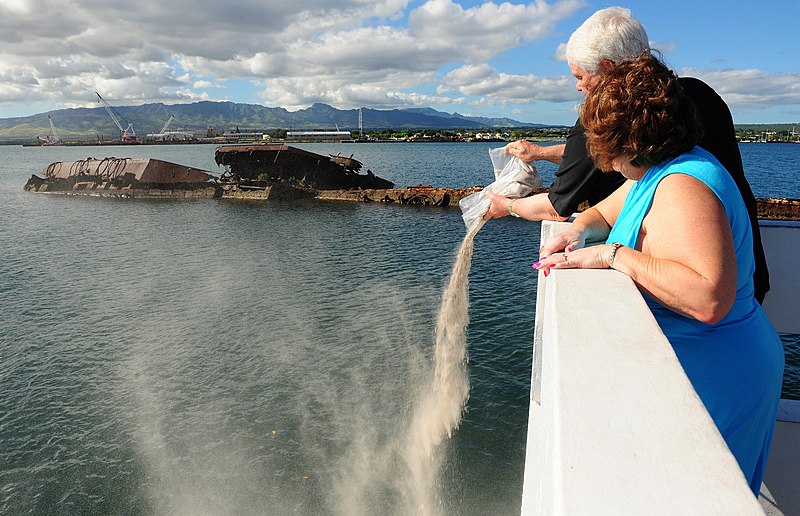
One of the questions I occasionally get asked when I tell people I work in the funeral profession is if it is possible to have a Viking funeral. “Only if you’re cremated first,” I always tell them. Yes, biodegradable Viking ship urns really do exist, so the demand must be out there. Of course, this is just one way a family could chose to scatter at sea. Other options include using a different biodegradable urn (there are a lot of options, check them out here), a basket lined with biodegradable paper, or pouring the ashes directly from a scattering urn into the sea.
Families have a lot of options when it comes to burial at sea options, much more than they probably even realize. You can charter a boat with a licensed captain from just about any coastal area for scattering ashes, with options for large vessels capable of holding a big funeral party to more intimate boats. Other options include having ashes interred in an underwater memorial reef or scuba diving to scatter ashes in a favorite dive spot. Paddle out ceremonies for those who loved water sports is another great idea. During these ceremonies, made famous by surfers in Hawaii, attendees will paddle out on a surf board or raft to form a circle and spread the ashes together.
Depending on if families want a guided experience or to do things on their own, they may need to research the legalities. Generally speaking, families should be aware of that most places require you to be at least three nautical miles from land. If one wishes to spread the ashes in a lake or pond, they will need to check with local authorities to learn if they are any specific regulations as some lakes and streams are considered protected waterways. When using a company that specializes in scattering ashes at sea, these details are generally taken care of for families so it might be helpful to find some companies near you that you can recommend.
4. Spreading Ashes in a Scattering Garden
In recent years, some cemeteries have begun holding an annual Scattering Day event to invite families to scatter remains for free. We especially love the idea of bringing multiple families together for an event like this to create a shared, healing experience. If your funeral home owns a cemetery or has close ties with one, consider installing or sponsoring the installation of a scattering garden. If space allows, you could even create one on your own funeral home grounds like the directors did at Goglin Funeral Home in Yankton, SD.
5. Firework Scattering

In 2005, author Hunter S. Thompson became the first person ever to be memorialized with a cremation firework display when his ashes were shot out of a cannon with red, white and blue fireworks. Since then, demand for a Celebration of Life in the Sky has increased (as much as we’d love to say ‘skyrocketed’ that would be a slight exaggeration), however due to restrictive laws related to both scattering ashes and pyrotechnics, there are few businesses in the U.S. offering this service. One exception is Greenlawn Funeral Home in Springfield, MO which has established a relationship with a professional fireworks company in order to offer this service to their families. As the only funeral home in the U.S. offering this, we would say that’s a pretty big business differentiator.
While it may not be practical for your funeral home to offer this service, be sure to keep up on the latest trends to see if any other companies that provide this service. Currently, this option is very popular in the UK where families can even purchase do-it-yourself, self-firing kits. However, at this time these kits cannot be shipped to U.S., leading some American families to travel to England to hold a memorial firework display. Since this is still a relatively new practice, we would recommend funeral professionals stay abreast of any updates related to its more widespread availability so they can share information with families who express an interest.
6. Scattering in Space
Both options offer families the ability to attend the launch in person and see video footage of their loved one’s ashes being released into space. In recent years, this option has gained momentum after the 2019 HBO documentary, Alternate Endings: Six New Ways to Die in America featured a family who chose to send their loves ones cremated remains on a space flight. Celestis and Elysium Space also made headlines last month when the Peregrine Moon lander, which was carrying the remains of 70 people and one dog, experienced a critical fuel leak that caused it to crash back down to earth. We can only imagine how distressing this must have been for those 70 families and it is certainly something one should be aware of could possibly happen if they chose a space memorial flight for their loved one.
While funeral directors may not be directly involved in facilitating space burials, being knowledgeable about these options allows you to provide guidance to families who express interest in this unique memorial. Understanding the potential risks, such as mission failures, ensures that directors can offer families a realistic perspective when considering a space burial. Simply having awareness of these services empowers your funeral home to support grieving families in making informed and meaningful choices.
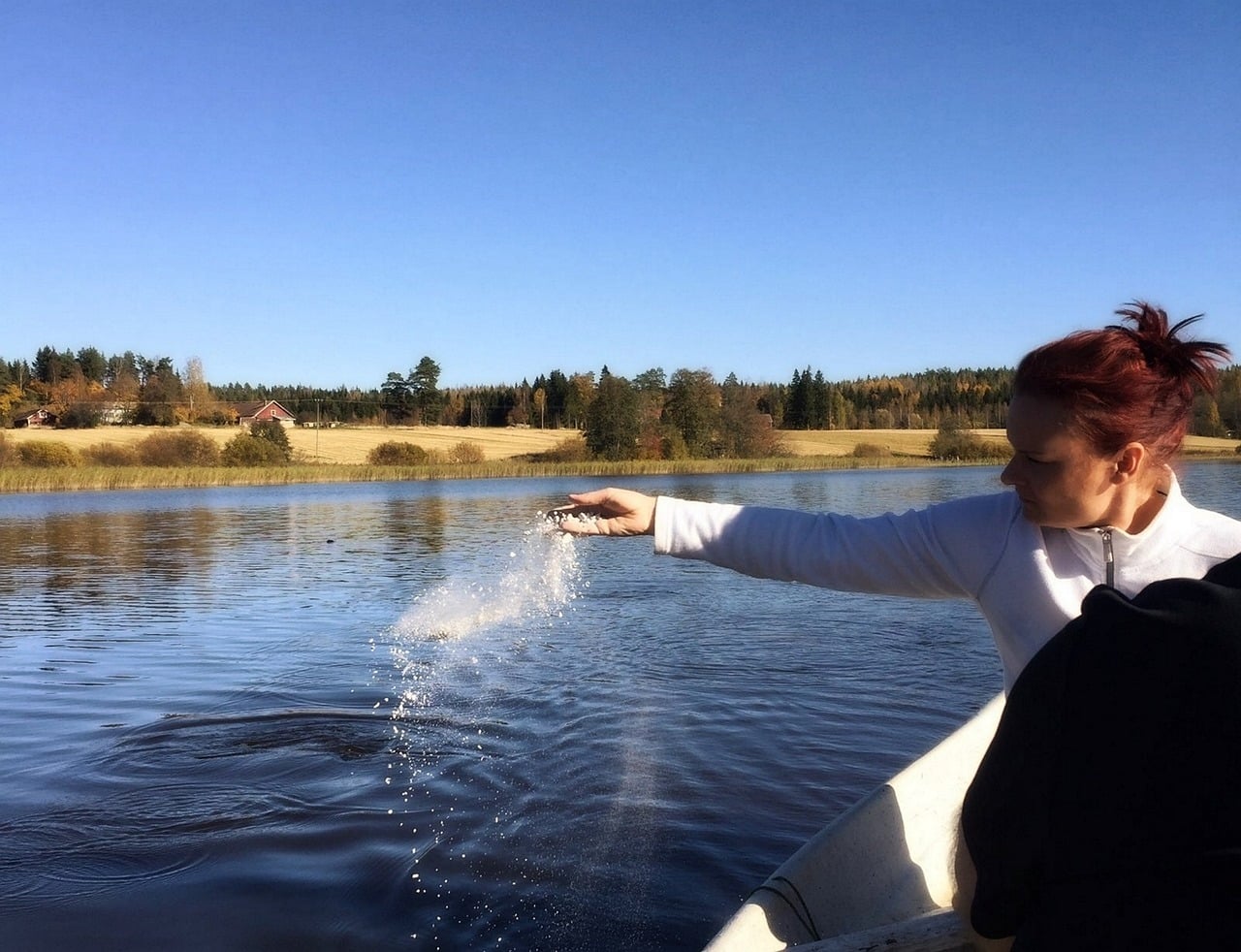
As cremation has grown in popularity, so has the demand for scattering ashes in a meaningful place to honor a loved one’s memory. Funeral homes have a choice in how they respond to cremation families that express a desire to scatter. You can try to persuade them to choose differently and send them on their way to figure things out alone, or you can be the guide that helps them along the next stage of their grief journey. Helping families understand all of their options for scattering ashes will not only provide them with comfort and clarity but also allow you to build deeper, more meaningful connections with those you serve. By embracing your role as a compassionate guide, you can ensure that families feel supported and empowered in honoring their loved ones in a way that is both personal and meaningful.
Related Reading
10 Years Later: A Scattering Story
7 Unexpected Places Cremated Remains Have Turned Up
8 Things We Learned at CANA’s 95th Annual Convention
